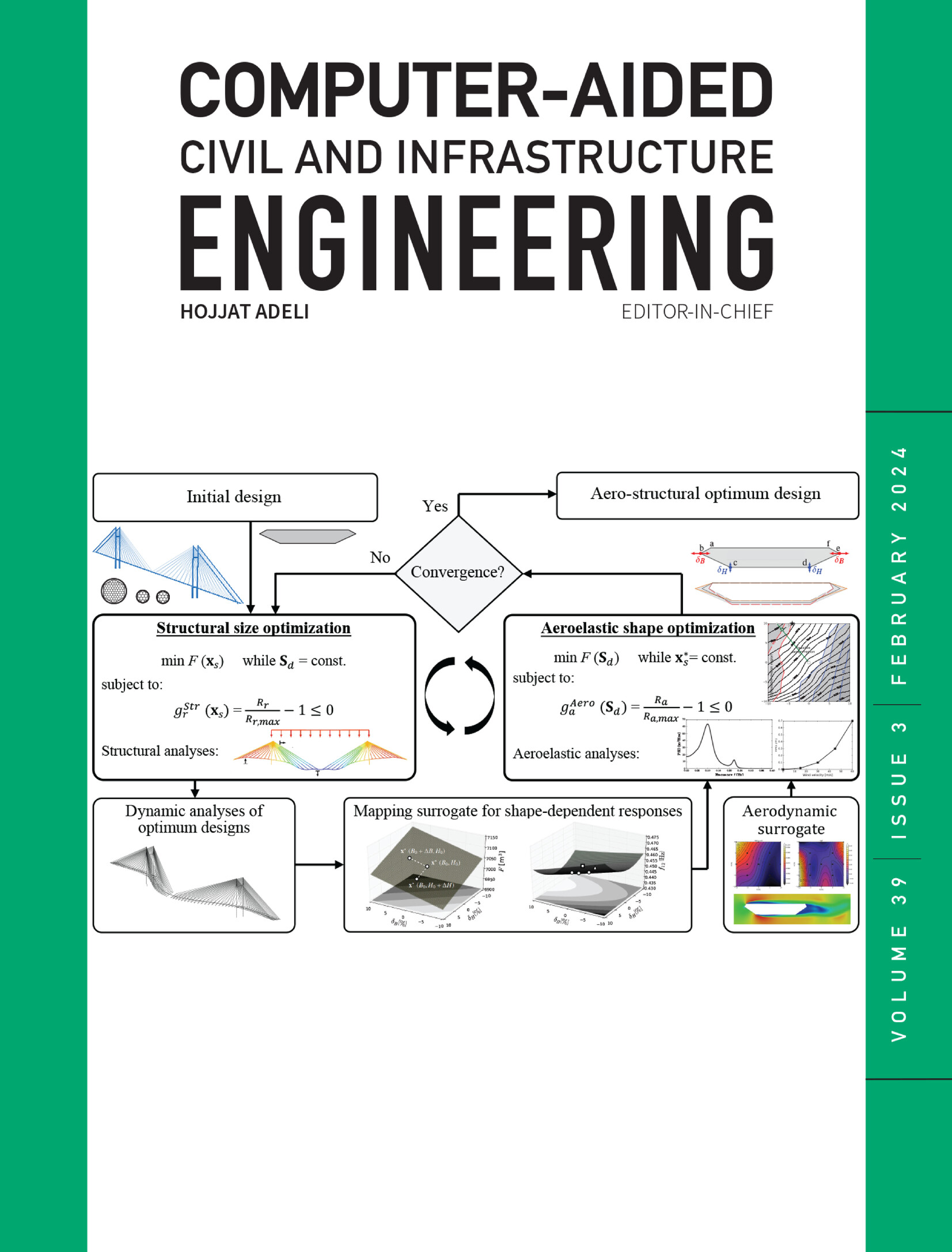Integrated urban land cover analysis using deep learning and post‐classification correction
IF 8.5
1区 工程技术
Q1 COMPUTER SCIENCE, INTERDISCIPLINARY APPLICATIONS
引用次数: 0
Abstract
The quantification of urban impervious area has important implications for the design and management of urban water and environmental infrastructure systems. This study proposes a deep learning model to classify 15‐cm aerial imagery of urban landscapes, coupled with a vector‐oriented post‐classification processing algorithm for automatically retrieving canopy‐covered impervious surfaces. In a case study in Corpus Christi, TX, deep learning classification covered an area of approximately 312 km利用深度学习和分类后校正进行城市土地覆被综合分析
城市不透水面积的量化对城市水和环境基础设施系统的设计和管理具有重要意义。本研究提出了一种深度学习模型,用于对城市景观的 15 厘米航空图像进行分类,并结合一种面向矢量的分类后处理算法,自动检索冠层覆盖的不透水表面。在德克萨斯州科珀斯克里斯蒂市的一项案例研究中,深度学习分类覆盖了约 312 平方公里的区域(或 148.6 亿个 0.15 米像素),分类后的工作导致检索到超过 4 平方公里(或 1.8 亿个像素)的额外不透水区域。结果还表明,由于现有方法无法考虑有树冠覆盖的不透水表面,因此低估了城市不透水面积。通过改进对城市尺度上各种不透水表面的识别和量化,这项研究可使各种环境和基础设施管理实践直接受益,并提高基于处理的城市水文和水基础设施模型的可靠性和准确性。
本文章由计算机程序翻译,如有差异,请以英文原文为准。
求助全文
约1分钟内获得全文
求助全文
来源期刊
CiteScore
17.60
自引率
19.80%
发文量
146
审稿时长
1 months
期刊介绍:
Computer-Aided Civil and Infrastructure Engineering stands as a scholarly, peer-reviewed archival journal, serving as a vital link between advancements in computer technology and civil and infrastructure engineering. The journal serves as a distinctive platform for the publication of original articles, spotlighting novel computational techniques and inventive applications of computers. Specifically, it concentrates on recent progress in computer and information technologies, fostering the development and application of emerging computing paradigms.
Encompassing a broad scope, the journal addresses bridge, construction, environmental, highway, geotechnical, structural, transportation, and water resources engineering. It extends its reach to the management of infrastructure systems, covering domains such as highways, bridges, pavements, airports, and utilities. The journal delves into areas like artificial intelligence, cognitive modeling, concurrent engineering, database management, distributed computing, evolutionary computing, fuzzy logic, genetic algorithms, geometric modeling, internet-based technologies, knowledge discovery and engineering, machine learning, mobile computing, multimedia technologies, networking, neural network computing, optimization and search, parallel processing, robotics, smart structures, software engineering, virtual reality, and visualization techniques.
文献相关原料
| 公司名称 | 产品信息 | 采购帮参考价格 |
|---|

 求助内容:
求助内容: 应助结果提醒方式:
应助结果提醒方式:


